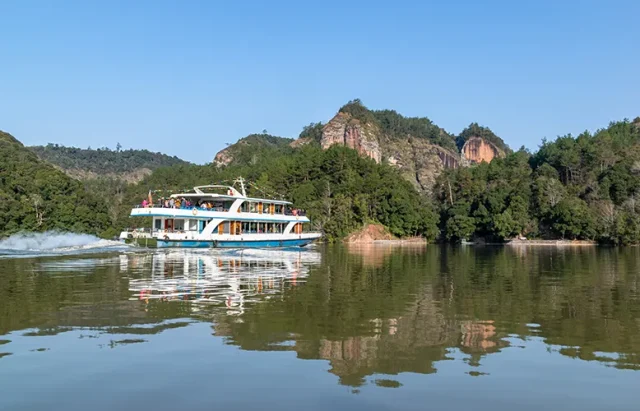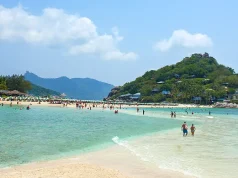
The Mekong isn’t just a river—it’s a living system.
It feeds fields, floats villages, and carries stories across six countries. And like all rivers, it changes with the seasons. Sometimes it’s a calm thread weaving past rice paddies. Other times it’s a roaring, unpredictable force that swallows farmland whole.
That’s why the question of “when to go” is trickier than it seems. You’re not just packing for the weather. You’re choosing which side of the Mekong you want to meet: the calm and steady, or the wild and restless. Both have their pull. Both offer something different.
The Comfort of the Dry Months
From November to April, the river slows down. The skies turn clear, the heat eases, and villages settle into their routines. Travelers love this stretch because it’s easy. Roads stay solid, boats dock without fuss, and temple tours don’t end with you scraping mud off your shoes.
Markets feel alive but not chaotic.
The floating villages tick along as though they’ve been waiting for you to arrive. Even the views feel curated—sunsets painting the water, everything in its place. Some people love it because it’s calm. Manageable. The Mekong looking polished for guests.
This is also when travel feels easiest. Roads aren’t washed out, excursions run on schedule, and boats can dock without worry. For many, this season feels like the “safe bet.” If you want predictable or would rather focus on sights than surprises, the dry season rarely disappoints.
But let’s be real—it’s not the full story of the river.
The Rain-Soaked Energy of Monsoon
Then May hits, and the monsoon flips the script.
Heavy rain, swelling waters, humidity so thick you’ll swear the air has weight. By August, some regions see rainfall pushing 300 mm a month. Sounds like a lot—and it is.
But this is the season when the Mekong feels alive. Rice paddies explode in green. Cambodia’s Tonle Sap Lake balloons to five times its size. A Mekong river cruise in this season doesn’t shrink your options—it expands them. Aqua Expeditions even notes how the floods let you reach hidden communities, places cut off when the water retreats.
Yes, you’ll get rained on. Maybe more than once. But the storms move fast, and when they clear, the river sparkles in a way the dry season can’t match.
So, When Should You Go?
It depends on what matters more to you. Do you want comfort—predictable days, sunny skies, easy excursions? Or do you want drama—the river in full flood, landscapes alive with change, access to places you’d never see otherwise?
Neither choice is wrong. The dry months give you a polished Mekong. The wet months give you a raw one. And the truth is, the river doesn’t care which you choose—it’ll keep moving, reshaping itself, regardless.
Final Thoughts: The River Calls the Shots
You can check weather reports, scroll through travel forums, and even obsess over rainfall charts. The Mekong won’t care. It’ll do what it always does—shift, flood, retreat, repeat.
So maybe the “best time” is simply whenever you’re ready to see the river as it is. Not the version you expect, but the one it decides to show you.
And that? That’s the whole point of going.





